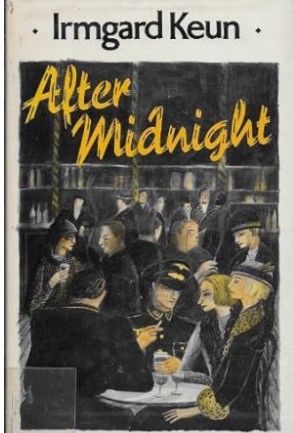Ben Blatt. Nabakov’s Favourite Word is Mauve: The Literary Quirks and Oddities of Our Most-Loved Authors.
Ben Blatt. Nabakov’s Favourite Word is Mauve: The Literary Quirks and Oddities of Our Most-Loved Authors. (United Kingdom: Simon & Schuster, 2017).
This one isn't written by a woman, but does collect data that compares the differences between women's and men's writing.
Blatt presents studies of literary data, including the favourite words of various authors. This book provides a unique perspective on the ways in which language and style are used in literature, and how they contribute to the overall form and meaning of a work. He uses the Natural Language Toolkit to count various parts of speech, so he can measure the number of adverbs per 10,000 words of a writer or text, for example.
It will become increasingly important to collect data about literature for analysis as we attempt to gather evidence to distinguish between texts being written by humans as opposed to artificial intelligence text generators.
I am particularly interested in the data collected to distinguish men’s writing from women’s writing. His data analysis reports such interesting facts as: across all genres of writing, “females use many more pronouns” (I yourself, their) and males use ‘many more noun specifiers’ (a, this, these). He measures word use by distinctiveness, that is used disproportionately by one sex rather than another. He created a corpus for classic literature, modern popular fiction, and modern literary fiction. After adjusting for other factors, he found the words with the most extreme imbalance. For example, in classic literature, the most male words were: chief, rear, civil, bigger, absolutely, enemy, fellows, king, public and contact. The most female worlds were: pillows, lace, curls, dress, china, skirt, curtains, cups, sheets and shrugged. Using another system a criteria was created to determine how masculine or feminine a novel is. He publishes a table comparing the number of he vs she in classic novels. Unsurprisingly, most books written by men have the most male mentions, and books by women have the most female mentions. Yet the books with the most male mentions are 100% he (The Hobbit, The Old Man and the Sea) while the novel with the most female mentions (The Prime of Miss Jean Brodie) is 79% she and 21% he. These things are quantifiable.
I have been interested in how men’s writing might differ from women’s writing since I was a teenager. I had noticed in reading book reviews that male reviewers describe women’s writing as ‘masculine’ thinking it is a compliment. Josephine Balmers reports F.A. Wright’s praising critique of ancient women poet Anyte’s work as ‘masculine’. In 2009, The Guardian, published a review of Ursula Le Guin’s Lavinia, with the headline:
A fantasist who lives in the real world: Novelist Tobias Hill is full of admiration for Ursula Le Guin's bold, postmodern take on the world of classical myth:
‘Elsewhere, a spare muscularity of style goes a long way to making Le Guin's ancient world convincing, a quality enhanced by thorough research. Le Guin is as careful a writer as she is an experienced one and the details of her Latium are both evocative and believable.’
I’m curious to see how we might quantify the rewritings of Greek myth compared to translations of the ancient works. Or how we might collect data to compare translations and then visualise that data.



Comments
Post a Comment